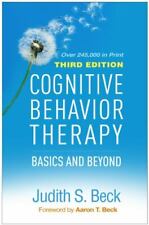Picture 1 of 1

Stock photo

Picture 1 of 1

Stock photo

Juvenile Crime, Juvenile Justice by National Research Council Staff and Institute of Medicine Staff (2001, Hardcover)

AlibrisBooks (464957)
98.6% positive Feedback
Price:
US $64.69
Approximately£48.30
+ $20.05 postage
Returns:
30 days return. Buyer pays for return postage. If you use an eBay delivery label, it will be deducted from your refund amount.
Condition:
New Hard cover
Oops! Looks like we're having trouble connecting to our server.
Refresh your browser window to try again.
About this product
Product Identifiers
PublisherNational Academies Press
ISBN-100309068428
ISBN-139780309068420
eBay Product ID (ePID)1711518
Product Key Features
Number of Pages404 Pages
LanguageEnglish
Publication NameJuvenile Crime, Juvenile Justice
SubjectMinority Studies, Criminal Law / Juvenile Offenders, General, Criminology
Publication Year2001
TypeTextbook
AuthorNational Research Council Staff, Institute of Medicine Staff
Subject AreaLaw, Social Science
FormatHardcover
Dimensions
Item Weight30.4 Oz
Item Length9 in
Item Width6 in
Additional Product Features
Intended AudienceScholarly & Professional
LCCN2001-001248
Dewey Edition21
IllustratedYes
Dewey Decimal364.36/0973
SynopsisEven though youth crime rates have fallen since the mid-1990s, public fear and political rhetoric over the issue have heightened. The Columbine shootings and other sensational incidents add to the furor. Often overlooked are the underlying problems of child poverty, social disadvantage, and the pitfalls inherent to adolescent decisionmaking that contribute to youth crime. From a policy standpoint, adolescent offenders are caught in the crossfire between nurturance of youth and punishment of criminals, between rehabilitation and "get tough" pronouncements. In the midst of this emotional debate, the National Research Council's Panel on Juvenile Crime steps forward with an authoritative review of the best available data and analysis. Juvenile Crime, Juvenile Justice presents recommendations for addressing the many aspects of America's youth crime problem. This timely release discusses patterns and trends in crimes by children and adolescents--trends revealed by arrest data, victim reports, and other sources; youth crime within general crime; and race and sex disparities. The book explores desistance--the probability that delinquency or criminal activities decrease with age--and evaluates different approaches to predicting future crime rates. Why do young people turn to delinquency? Juvenile Crime, Juvenile Justice presents what we know and what we urgently need to find out about contributing factors, ranging from prenatal care, differences in temperament, and family influences to the role of peer relationships, the impact of the school policies toward delinquency, and the broader influences of the neighborhood and community. Equally important, this book examines a range of solutions: Prevention and intervention efforts directed to individuals, peer groups, and families, as well as day care-, school- and community-based initiatives. Intervention within the juvenile justice system. Role of the police. Processing and detention of youth offenders. Transferring youths to the adult judicial system. Residential placement of juveniles. The book includes background on the American juvenile court system, useful comparisons with the juvenile justice systems of other nations, and other important information for assessing this problem., Even though youth crime rates have fallen since the mid-1990s, public fear and political rhetoric over the issue have heightened. The Columbine shootings and other sensational incidents add to the furor. Often overlooked are the underlying problems of child poverty, social disadvantage, and the pitfalls inherent to adolescent decisionmaking that contribute to youth crime. From a policy standpoint, adolescent offenders are caught in the crossfire between nurturance of youth and punishment of criminals, between rehabilitation and "get tough" pronouncements. In the midst of this emotional debate, the National Research Council's Panel on Juvenile Crime steps forward with an authoritative review of the best available data and analysis. Juvenile Crime, Juvenile Justice presents recommendations for addressing the many aspects of America's youth crime problem. This timely release discusses patterns and trends in crimes by children and adolescents?trends revealed by arrest data, victim reports, and other sources; youth crime within general crime; and race and sex disparities. The book explores desistance?the probability that delinquency or criminal activities decrease with age?and evaluates different approaches to predicting future crime rates. Why do young people turn to delinquency? Juvenile Crime, Juvenile Justice presents what we know and what we urgently need to find out about contributing factors, ranging from prenatal care, differences in temperament, and family influences to the role of peer relationships, the impact of the school policies toward delinquency, and the broader influences of the neighborhood and community. Equally important, this book examines a range of solutions: Prevention and intervention efforts directed to individuals, peer groups, and families, as well as day care-, school- and community-based initiatives. Intervention within the juvenile justice system. Role of the police. Processing and detention of youth offenders. Transferring youths to the adult judicial system. Residential placement of juveniles. The book includes background on the American juvenile court system, useful comparisons with the juvenile justice systems of other nations, and other important information for assessing this problem.
LC Classification NumberHV9104.J832 2001
All listings for this product
Be the first to write a review




![Juvenile Crime, Juvenile Justice [Hardcover] Institute of Medicine; National ...](https://i.ebayimg.com/images/g/jlgAAOSwaXRgfeGZ/s-l225.jpg)





















